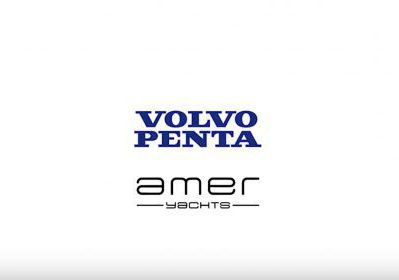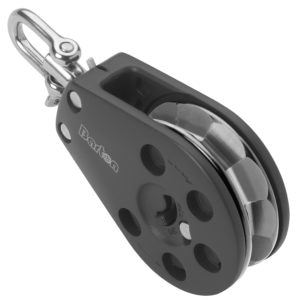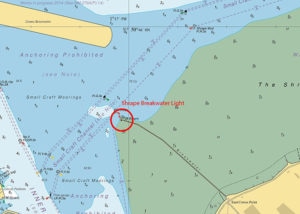Volvo Penta & Amer Yachts challenge boaters to cruise below 15 knots

To ensure the seas remain a haven for fish and mammals to feed and breed, it is important to cruise below 15 knots in marine sanctuaries and areas rich with wildlife.
“Scientific evidence proves that boats heavier than 80 tonnes, which go faster than 15 knots, pose a higher risk of collision to cetaceans (marine mammals),” says Sabina Airoldi, a marine biologist at the Tethys Research Institute – an Italian organization dedicated to oceanic conservation. “There is such a variety of species of wildlife in the Mediterranean Sea, and among them is the Fin Whale – the biggest animal in the world after the Blue Whale. Because of their large size Fin Whales and Sperm Whales find it hard to avoid fast moving boats, putting them at higher risk of collisions which can often be fatal.”
The institute’s work involves monitoring marine wildlife in the Pelagos Sanctuary, an 87,000 km² area in the Mediterranean Sea between Italy, Monaco and France. There are eight species of cetaceans in the Pelagos Sanctuary, with around 400 Fin Whales and approximately 38,000 Striped Dolphins. The institute tracks the mammals via satellites and studies the complex interplay of their behavior in relation to human activities. But there are around 9,000 boats in the Sanctuary’s waters every day, and approximately 22,000 ships of more than 100 tonnes in the Mediterranean as a whole, which leads to a congestion of space.
“We need to share this space,” says Airoldi. “It’s important that boaters cruise slowly to give cetaceans space to thrive, and to really take time to enjoy what they see around them.”
‘Citizen scientists’
Italian yacht-builder Amer Yachts has created onboard software for its latest Amer 94 yacht, which allows boaters to send data, including the GPS position, related to the mammals and fish they see, to the Tethys Research Institute. The intention is to help their customers recognize the marine wildlife they spot and to share details with the institute for research. The system also has a speed indicator to remind the captain to cruise below 15 knots when entering the Pelagos Sanctuary, in consideration of the area’s large population of cetaceans.
“This system shows boaters how behave sympathetically in the presence of animals and will be a great contribution to science,” says Airoldi. “It allows them to become citizen scientists.”
Barbara Amerio, owner of Amer Yachts, says: “We want to help amplify the research of the institute. If we all adopt a respectful attitude to our activities on the water, it will not only help preserve marine wildlife, but will also give future generations the pleasure of interacting well with nature.”
Fuel efficiency at all speeds
The call to cruise at speeds of below 15 knots is also supported by Volvo Penta.
“When boaters cruise slowly, they will be moving in a way that is better for wildlife, and that is something that everyone out on the water should be aware of,” says Björn Rönnvall, yacht product manager for the marine leisure segment at Volvo Penta. “It’s important that the captain knows the specific fuel consumption at every speed. Sometimes you need to cruise fast, but cruising slowly is more efficient and better for the environment. And our Volvo Penta IPS system is a perfect match for fuel efficient cruising at all speeds.”










